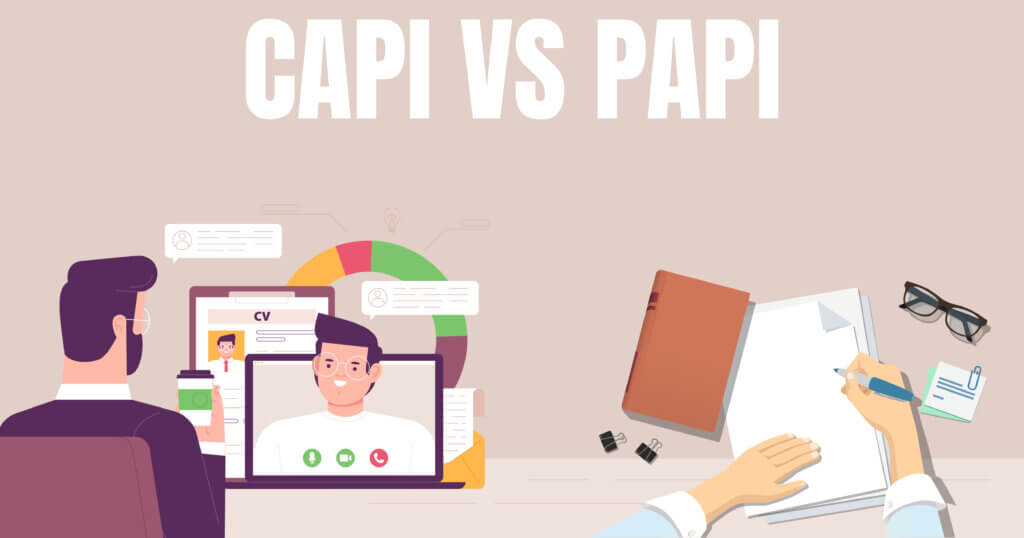CAPI vs PAPI

CAPI is also known as computer-assisted personal interviewing is a data collection survey method that involves the use of an electronic device for recording the answers of the respondent whereas PAPI involves the use of paper to record the responses.
They both have one thing in common – they take place in person face to face.
Now let’s talk about the differences.
Data collection and storage
In CAPI, data is entered, stored, and uploaded on the cloud for further analysis through the use of electronic devices (smartphones, tablets, laptops, computers, etc).
However, in PAPI, Data is first noted down onto the paper and then that data needs to be taken to the office for transferring into the computer. This is time-consuming and requires a data entry team to do the job.
Quality control
The flow of questions is automated, so the enumerator does not need to decide the order of the questions, there is hardly any scope for error in CAPI as the software is self-sufficient in data validation.
In PAPI, the survey teams need to scrutinize every paper survey form to catch enumerator errors, and then the forms can be sent for correction if required.
Software/Printing
For conducting a CAPI survey, the software is used and a template design is loaded onto the devices before the survey begins. This is one of the main fixed costs involved in using the CAPI method of data collection.
In the case of PAPI, physical paper survey forms need to be designed with questions printed on them which will be handed out to the respondents. Furthermore, template design is needed to be loaded onto the computer in which data will be transferred from physical forms after collection.
Question pattern
In both methods, Questions can be in the form of multiple-choice or write-in responses. CAPI also allows for capturing an image, recording video/audio which PAPI cannot accommodate.
Skip patterns and data validation need to be handled by the survey team in the case of PAPI whereas it is handled by the software in the case of CAPI.
For example – the enumerators will need to scrutinize every paper survey form to make sure that no invalid or illogical data has been entered in the case of PAPI whereas the CAPI software set up on the device can take of data validation thereby saving loads of time and free from human error.
Advantages CAPI has over PAPI
One of the advantages of CAPI is that the enumerator doesn’t need to administer the questionnaire during the survey, he can focus on the responses and not worry about the next question since the software can handle that.
Hence CAPI surveys are much less strenuous to conduct.
Data entry takes place during the survey in CAPI and data is instantly available for use whereas, in PAPI, there are loads and loads of piles of paper questionnaires that need to be transferred onto the computer for data to be used.
One might argue that CAPI is more expensive to execute since the programming and software set up is costly, however, this would be a one-time fixed cost and with tech developing every day, it’s getting cheaper than ever whereas the printing variable costs and data entry costs in PAPI would total an even higher expense.
Conclusions and Recommendations
Institutions must look for tools that reduce the cost of data collection without losing data quality.
Studies show that CAPI is more cost-effective for surveys with large sample sizes as the sample size increases, the fixed costs are offset by a reduction in variable costs.
Results indicate that the fixed costs of purchasing equipment for CAPI surveys are compensated by lower variable costs.
The advantages of CAPI over PAPI are also expected to become larger in the coming years, because of improvements in equipment, software, and availability of internet services in rural areas, especially for developing countries.
Trusted by 500+ Clients
Get in Touch
We are here for you, and we are wearing our thinking caps